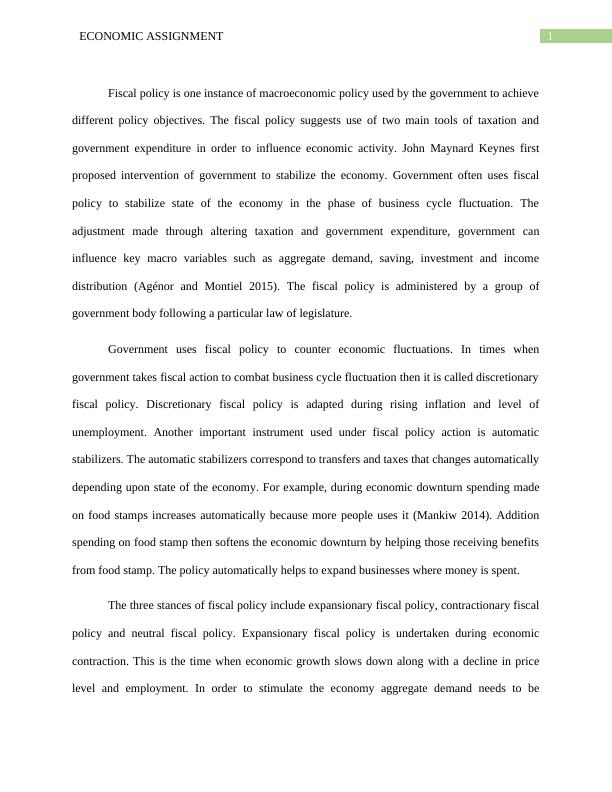Understanding Fiscal Policy: Tools, Stances, and Objectives
4 Pages667 Words264 Views
Added on 2023-06-11
About This Document
This article discusses fiscal policy, its tools, stances, and objectives. It explains how the government uses taxation and government expenditure to influence economic activity. The article also covers the three stances of fiscal policy, which are expansionary, contractionary, and neutral. Additionally, it highlights the short-term and long-term objectives of fiscal policy. The article is relevant for students studying economics and related courses.
Understanding Fiscal Policy: Tools, Stances, and Objectives
Added on 2023-06-11
ShareRelated Documents
End of preview
Want to access all the pages? Upload your documents or become a member.
Fiscal Policy Economic Assignment
|16
|3439
|289
Fiscal Policy and its Implementation in Singapore in 2020
|5
|1045
|71
Introduction to Business Environment
|18
|1288
|100
ECN 60204 Macroeconomics Assignment
|5
|890
|76
Managerial Economics: Fiscal Policy, Monetary Policy and Taxation
|7
|851
|307
Macroeconomics
|7
|695
|85


